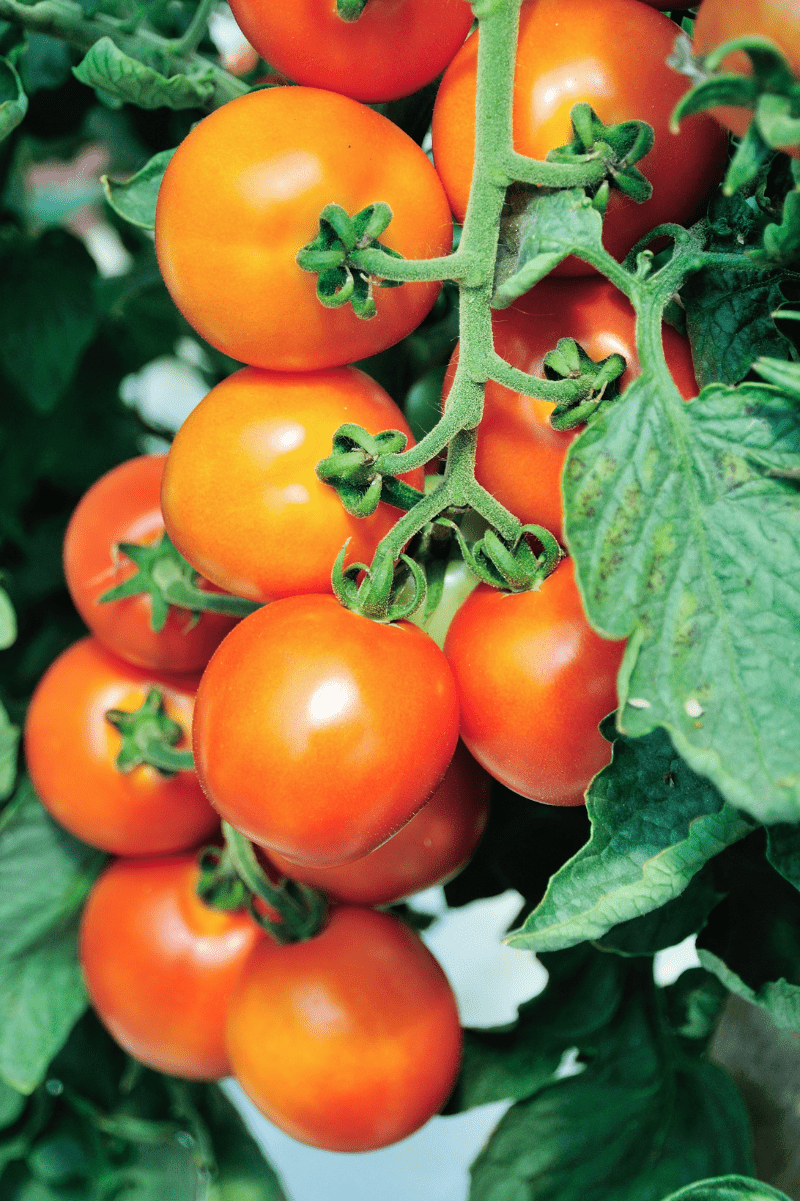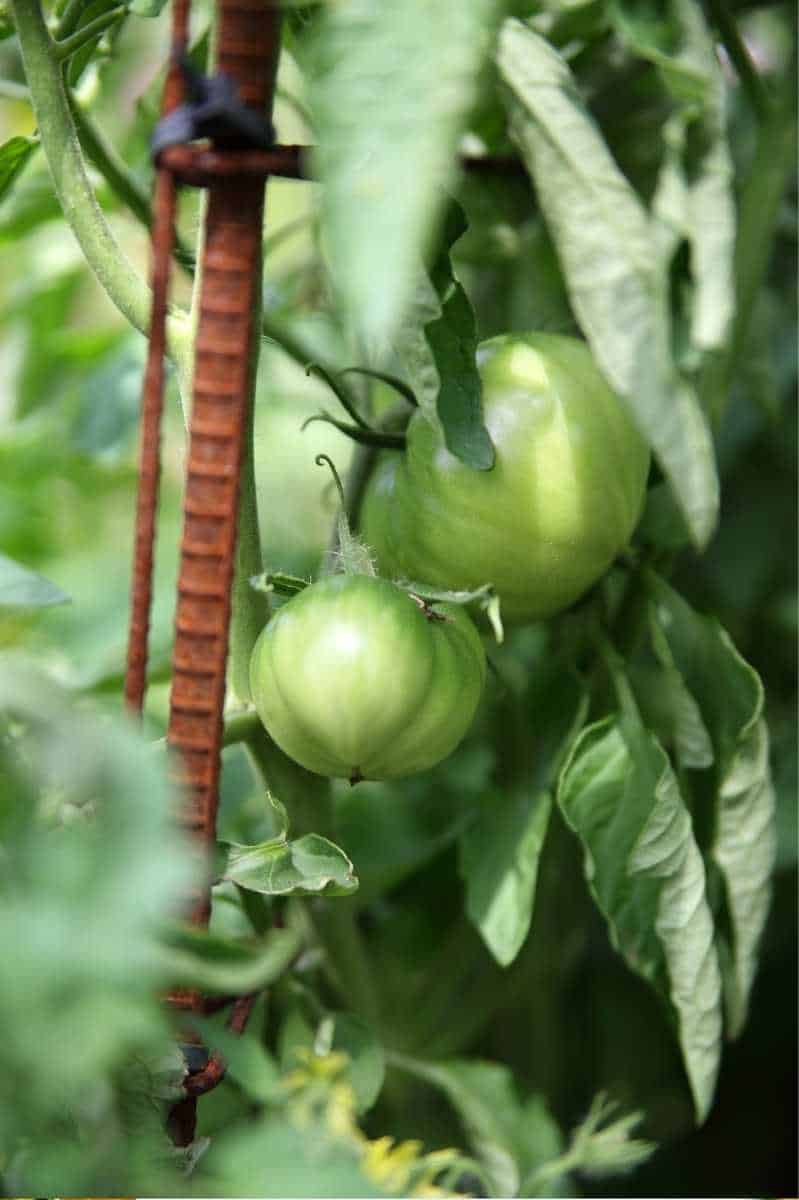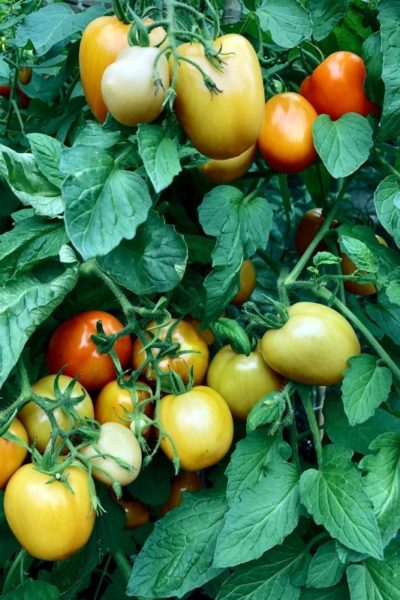A tomato plant shows lots of healthy growth, but its fruit stays green for weeks. What’s happening? Let’s talk about why your tomatoes are not turning red!
Among home vegetable growers, one of the most popular garden vegetables to grow is tomatoes. Truly, you haven’t eaten a tomato until you’ve tasted the flavor of a tomato straight out of the garden. But what if the tomatoes are stuck in the green stage? We can help!
When do tomatoes turn red?
Growing tomatoes takes some patience—they have a long growing season! So if your tomatoes haven’t ripened yet, check your seed packets—they may just need a bit more time. Tomatoes can take anywhere from 50-80+ days from transplant to harvest, depending on the tomato variety, tomato size (cherry tomatoes will be ready earlier than larger tomatoes), and the weather.
Tomatoes require a long growing season, so start the seeds 6-8 weeks before your last frost date.
Growfully Protip
Not all tomatoes are red—some tomato varieties produce yellow, orange, purple, or even green fruit instead red tomatoes. So make sure you know what color the tomato fruits should be at maturity for your varieties!

Why is it taking so long for my tomatoes to ripen?
The prime culprit for tomatoes not ripening is temperature. Tomato ripening requires temperatures between 50°F and 85°F. Outside of that range, the tomato plant will not produce the carotene and lycopene needed to prompt color changes for the ripening process. The optimum temperature for tomato ripening is 70-85°F.
How do I get my tomatoes to turn red?
Green tomatoes can also be a result of overgrown tomato plants diverting too much energy to new growth, rather than fruit growth.
Pruning and pinching your tomato plants can help the plants produce plenty of healthy fruit. Remove any lower branches of your plant prior to planting in order to plant it deeper and encourage new root growth. As the season progresses, you can also prune off the bottom shoots that aren’t producing flowers to encourage fruit growth.

Harvesting Tomatoes
You know your tomatoes are ready for harvest when most of the fruit has been vine-ripened and turned its final color. Some varieties will have yellow or pink around the top of the fruit where it joins the stem, but the rest of the fruit will be completely ripe. It’s okay to pick these as they’ll fully ripen on the counter.
Apply a bit of pressure to the tomato. If the skin sinks slightly under pressure, it’s ripe and ready to be picked. Ripe tomatoes will often break away from the stem with the slightest bit of pressure, but if a tomato is being stubborn, it’s best to use clippers instead of forcing a tomato that’s stuck on the vine.
How do I get my tomato plants to produce more fruit?
Helping tomato plants produce more fruit starts before the plants are even in the ground. To provide ideal conditions for your tomatoes to have a large harvest, you need to:
- Prepare the soil well and consider adding additional calcium in the form of lime in the fall or crushed eggshells in the spring. Calcium can help prevent blossom end rot and will improve your harvest.
- Warm the soil before transplanting your seedlings to give them the best possible start.
- Plant your tomato seedlings deep to allow new roots to form for strong, healthy plants.
- Space out your plants to allow for increased airflow—preventing diseases—and less competition for nutrients.
- Water deeply every two to three days and keep your watering consistent. Avoid getting the leaves of your tomato plants wet as this can lead to disease.
- Add mulch around the base of your tomato plants to prevent soil erosion, maintain soil temperature and moisture, and prevent weeds from competing for nutrients with your plants.
- Use good supports to keep your leaves and fruit away from the ground while allowing your plant to grow to its potential.
- Prune your tomato plants by removing suckers and lower branches to divert your plant’s energy into producing more fruit.
As the growing season ends, consider removing any fully green tomatoes from around the bottom of your plant to increase the chances the upper tomatoes will ripen before a frost.

Can you pick tomatoes green and let them ripen?
Ideally, tomatoes are left on the vine to ripen. But if the first frost is coming, you can pick any unripe tomatoes and either allow them to ripen on the counter at room temperature (do not put them in the fridge!). Tomatoes will produce their own ethylene gas to encourage ripening, but if you want to speed up the process even more, place the tomatoes with an apple or ripe banana in a paper bag on the counter.
Alternatively, you can use the green tomatoes as-is! Green tomatoes can be made into pickles, relish, or fried green tomatoes.







